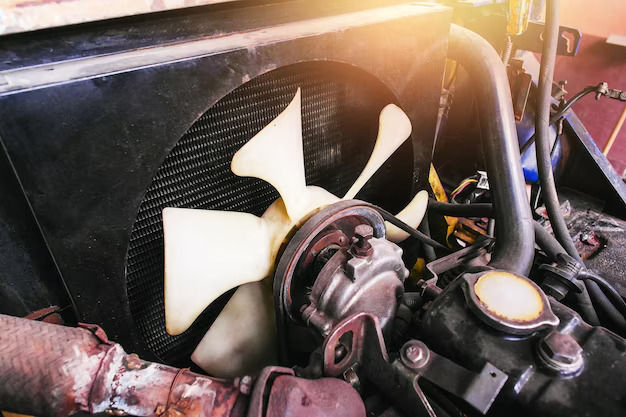The cooling system in your vehicle is responsible for regulating the engine’s temperature, preventing overheating, and ensuring optimal performance. However, cooling system leaks can occur over time, jeopardizing the engine’s health and reliability. In South Africa, where extreme temperatures and demanding driving conditions are prevalent, it is crucial for drivers to know how to troubleshoot and fix common cooling system leaks. In this article, we will explore some common causes of cooling system leaks and provide guidance on troubleshooting and resolving them effectively.
- Identifying the Leak: The first step in troubleshooting a cooling system leak is identifying its source. Check for visible signs of coolant leakage, such as puddles beneath the vehicle, stains or wet spots on hoses, radiator, or engine components. Pay attention to any sweet-smelling or steam-like odors coming from the engine bay, as they may indicate coolant leakage. Additionally, monitor the coolant reservoir’s level regularly, as a significant drop may indicate a leak.
- Radiator and Hose Inspection: The radiator and coolant hoses are common areas for cooling system leaks. Inspect the radiator for visible cracks, corrosion, or loose connections. Ensure that the radiator cap is securely fastened and in good condition. Examine the coolant hoses for signs of wear, such as bulges, cracks, or soft spots. Tighten hose clamps if necessary. If any issues are detected, these components may need to be repaired or replaced.
- Water Pump Examination: The water pump circulates the coolant throughout the engine. Inspect the water pump for leaks around the gasket or weep hole. A leaking water pump often indicates a failing seal or bearing, which should be addressed promptly. If a leak is found, consult a professional mechanic to determine whether the water pump needs repair or replacement.
- Heater Core Inspection: The heater core is responsible for providing warm air to the cabin. A leaking heater core can result in coolant leaks inside the vehicle or fogging of the windshield. Look for signs of coolant accumulation on the passenger-side floorboard or a sweet smell inside the car. If a leaking heater core is suspected, it is advisable to consult a professional technician, as replacing it can be a complex task.
- Gasket and Seal Evaluation: Faulty gaskets and seals can cause coolant leaks in various engine components, such as the cylinder head, intake manifold, or thermostat housing. Inspect these areas for signs of coolant seepage or stains. If leaks are detected, replacing the gaskets or seals may be necessary. It is recommended to seek assistance from a qualified mechanic, as proper installation is crucial for effective sealing.
- Repairing or Replacing Components: Once the source of the cooling system leak is identified, determine whether the component can be repaired or needs to be replaced. Small leaks in hoses or gaskets can often be fixed with sealants or clamps, but it is essential to evaluate the severity and long-term reliability of such repairs. For major leaks or damaged components, replacement is generally the best course of action to ensure a lasting solution.
Proper maintenance and prompt resolution of cooling system leaks are vital for the health and reliability of your vehicle’s engine, especially in the challenging driving conditions of South Africa. By identifying the source of the leak and inspecting key components, such as the radiator, hoses, water pump, and gaskets, drivers can effectively troubleshoot and resolve cooling system leaks. However, it is important to recognize the limits of DIY repairs and seek professional assistance when needed. Regular inspections, maintenance, and addressing cooling system leaks promptly will contribute to a well-functioning vehicle and a smoother and safer driving experience in South Africa.











